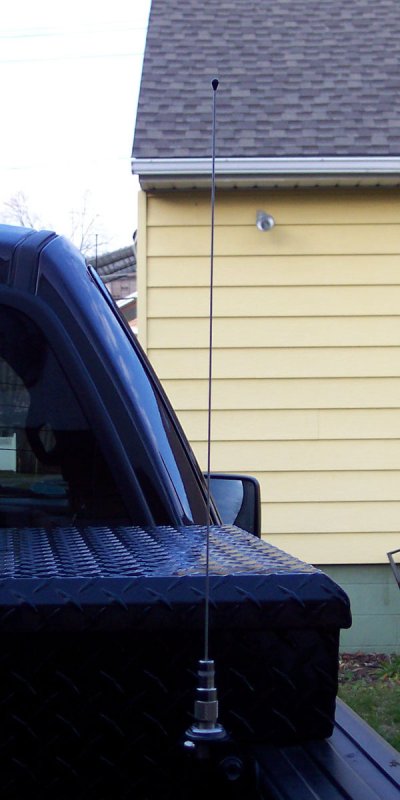All The Way
FRF Addict
Hmm they are up now. Hostgator may have gone down or something.
Disclaimer: Links on this page pointing to Amazon, eBay and other sites may include affiliate code. If you click them and make a purchase, we may earn a small commission.








 Need to set you up with a UHF/VHF radio.
Need to set you up with a UHF/VHF radio.A cbNeed to set you up with a UHF/VHF radio.
The difference is night and day for many many reasons.
CB is cheap, but you get what you pay for. Poor audio quality, mediocre to poor range, and because it's HF, antenna setup is very very touchy.
UHF/VHF audio quality is great. Tone squelch is great (which is basically a specific tone that's transmitted by someone's radio that is unheard by the operator, but tells your radio to break squelch, so you never get that "KSHHHH" static noise)
The ability to use repeaters to talk for much greater distances without relying on skip.
The output power which provides for a stronger signal, and farther propagation. On average 50 wats for VHF and 20 to 30 for UHF vs 5 for CB.
APRS - Automatic Position Reporting System.
Basically you get a radio, capable of transmitting data, hook your GPS up to it, and it sends your location information over the air. (GREAT for offroad adventures when you might get lost or break down) This system has the ability to send distress signals, as well as direct text messages to other users.
Not to mention it's very controlled so it's a much nicer service to use. People are typically MUCH better behaved on the amateur service.
Licensing info for HAM radio usage. Cost $15.. good for 10 years and its super easy to study for and pass.
Technician Class License. You can get an entry level Amateur Radio Technician license by passing a 35-question multiple-choice examination. No Morse code test is required. The exam covers basic regulations, operating practices, and electronics theory, with a focus on VHF and UHF applications.
Technician Class operators are authorized to use all amateur VHF and UHF frequencies (all frequencies above 50 MHz). Technicians also may operate on the 80, 40, and 15 meter HF bands using Morse code, and on the 10 meter band using Morse code, voice, and digital modes. No Morse code test is required.
Sound Quality
Another of the most significant advantages is that VHF offers much better sound quality than HF bands like AM, shortwave and CB (Citizen's Band). This explains why broadcasters use it to transmit high-quality audio on FM radio and some television stations. Many of these broadcasters use stereo sound. Although sound clarity doesn't hold as many advantages for two-way communications, it still boosts intelligibility, which prevents misunderstandings and reduces the need to repeat oneself. The sound quality usually remains uniform at all hours
Interference
Radio interference does not affect VHF nearly as much as HF. This proves especially beneficial for use in vehicles. Many police forces switched to VHF in the past, due to interference problems on HF. VHF offers advantages in rural areas because it can more easily transmit long distances, when compared to UHF (Ultra High Frequency). However, it does not transmit so far that distant stations interfere with each other at night
UHF still has kick ass range compared to CB

